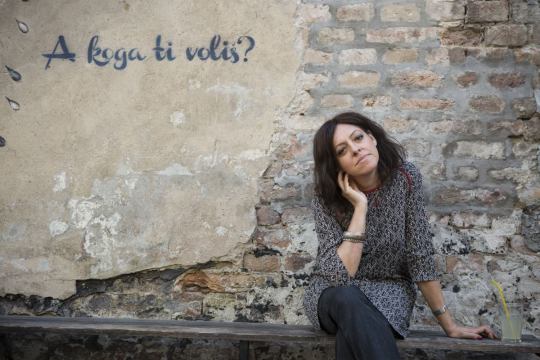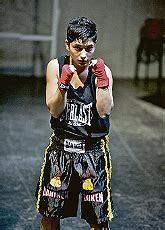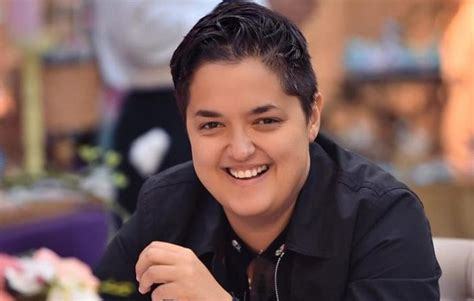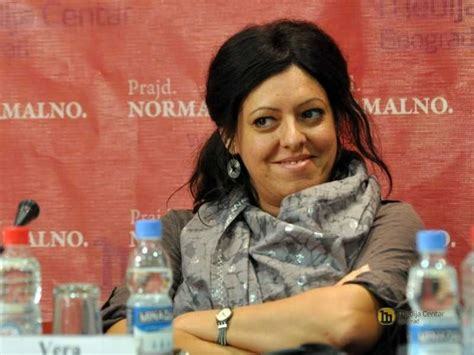#Vera Kurtić
Text

Vera Kurtić
Gender: Female
Sexuality: Lesbian
DOB: N/A
Ethnicity: Romani
Nationality: Serbian
Occupation: Writer, activist
59 notes
·
View notes
Text
The educational situation of Romani children is characterized by exclusion, low enrolment rates, high dropout rates and the disproportionate placement of Romani students into ‘special schools’ and classes offering substandard education. Inclusive education is still not fully enforced, and too many Roma children are still being enrolled in special schools. However, the number of Romani children enrolled into these ‘special schools’ has decreased from 8% to 6% in recent years. Preliminary data on the educational attainment of Roma from the 2011 population census indicates that more than 15% of all Roma in Serbia above the age of 10 are illiterate compared to the national average which is below 2%. 69% of all illiterate Roma are women and 34.2% of Roma have not completed primary education, compared to 11% of the overall population. The Romani population, and especially Romani women, are the most discriminated against in the labor market. A 2011 report from the European Commission against Racism and Intolerance (ECRI) highlights that Roma in Serbia face low economic activity and there is almost total exclusion of Roma from the public sector, which indicates a pattern of discrimination against Roma. The low educational attainments among the Roma are reflected in low Roma employment rates, with only one in five Roma in Serbia is working. The employment gap between Roma and the majority population of working age is 29 percentage points. The low education levels are also reflected in much lower earnings. A World Bank study shows that the average net monthly income of an employed Roma is 48% less than the income of a member of the majority population.
-- Džuvljarke: Roma lesbian existence, Vera Kurtić
#Džuvljarke#Vera Kurtić#radical feminism#radfems do interact#radfems please interact#it's my last quote from dzuvljarke if i'm not mistaken#roma feminism#quotes
7 notes
·
View notes
Text
♀️latscho diwes djuviale♀️
💞 I made this blog to highlight the specific struggles Romani women face based on our sex, our race and our class
💞 I'm anti-gender, anti-sex trade, anti-religion, anti-capitalist
💞 I support women's and LGB rights. My feminism is female only!
💞 I'm a half-sinti, half-white working class homosexual woman living in Western Europe
BEFORE YOU BLOCK ME, READ THIS: x

FAQ, BOOKS AND RESOURCES BELOW
General / Frequently asked questions
-> Difference between Roma and Romanian (x)
-> Difference between Roma and Sinti (x)
-> My profile picture is from De la source à la mer (1984), by Sinti-Manouche filmmaker and writer Pisla Helmstetter
-> My banner is from The Gypsies are Found Near Heaven (1975), by Emil Loteanu
Posts on the racialized misogyny targeting Romani women
-> general masterpost (x)
-> posts on Romani women being sex trafficked into prostitution in Europe (x) (x)
-> posts on the forced sterilization of Romani women in Europe (x) (x) (x) (x)
-> post on healthcare discrimination (x)
-> incest, sexual and domestic violence targeting Eastern European Romani women (x) (x)
-> Roma, religion and misogyny (x)
-> On "Gypsy witches" (x)
Inspiring Romani women you should know about
-> autobiographies by Romani women (x)
-> Sandra Jayat, French-Romani painter and poet (x)
-> Katarina Taikon, Swedish-Romani writer and antiracist activist (x) (x)
-> Elena Gorolova, Czech-Romani women's rights advocate (x)
-> Jelena Savić, Serbian-Romani feminist, poet and essayist (x)
-> Tela-Tchaï, French-Romani actress (x)
-> Amoun Sleem, Palestinian-Domari antiracist activist and feminist (x)
-> Philomena Franz, German-Romani Holocaust survivor and writer (x)
-> Vera Kurtić, Serbian-Romani lesbian feminist (x)
-> Kiba Lumberg, Finnish-Romani and butch lesbian artist (x)
-> Zilli Schmidt, German-Romani Holocaust survivor (x)
-> "15 Bad ass Romani ladies you should know about" (x)
-> Romani herstory, an "ever-growing digital library that celebrates women of Romani descent from the past and present, unsung heroines & trailblazers who refuse(d) to conform to stereotypes"
Romani feminist writings
-> Intersections of Gender, Ethnicity, and Class: History and Future of the Romani Women’s Movement, by Jelena Jovanović, Angéla Kóczé, and Lídia Balogh (x)
-> Gender, Ethnicity and Class: Romani Women's Political Activism and Social Struggles, Angéla Kóczé (x)
-> Lessons from Roma Feminism in Europe: Digital Storytelling Projects with Roma Women Activists from Romania, Spain and Sweden, Jasmine Ljungberg (x)
-> Romani women’s identities real and imagined: Media discourse analysis of “I’m a European Roma Woman” campaign, Jelena Jovanović (x)
-> Džuvljarke: Roma Lesbian Existence, Vera Kurtić (x)
-> Re-envisioning Social Justice from the Ground Up: Including the Experiences of Romani Women, Alexandra Oprea (x)
-> Angéla Kóczé on the hijacking of the Romani feminist and antiracist movement by neoliberal groups (x) (x)
-> Mihaela Drăgan on the racialization of Romani women (x)
-> quotes from Romani feminist books (x)
Learn about the Romani genocide
-> general post (x)
The Genocide and Persecution of Roma and Sinti. Bibliography and Historiographical Review (x)
Roma Resistance During the Holocaust and in its Aftermath, Angéla Kóczé, Anna Lujza Szász (eds.) (x)
O Porrajmos: the Romani Holocaust, Ian Hancock (x)
Porrajmos: The Romani and the Holocaust, Ian Hancock (x)
Responses to the Porrajmos (the Romani Holocaust), Ian Hancock (x)
Barvalipe Roma Online University (playlist of lectures about many different aspects of Romani history, politics and culture) (x)
Romani slavery in Romania
Brief overview (x)
Alternatives to the labrys flag


(first design by @/sapphos-darling)
362 notes
·
View notes
Text
June is Pride Month and Romani Heritage Month!
Have some Romani lesbians!





Sandra Selimović, Serbian-Austrian actress and activist.
Kiba Lumberg, Finnish painter and author.
Marija Šerifović, Serbian singer and Eurovision winner.
Vera Kurtić, Serbian writer and activist.
Alba Flores, Spanish actress.
157 notes
·
View notes
Text
ʒuvlipen (n.): feminism
★ About
-> Marxist feminist learning
-> University student; coffee and book enthusiast
-> This blog is mostly about sharing news and articles relating to Romani rights and Romani history, with a special focus on women and girls.
-> I am mixed (white and romani) and born, raised and living in Western Europe.
-> I like Bollywood, animation and musical theatre \(^.^)/
★ Navigation
-> General
-> Answered questions
-> Original posts
-> Marxfem posting: general, anti militarism, anti imperialism, housing, class, homelessness, anti religion
★ Romani issues
-> Difference between Roma and Romanian
-> Difference between Roma and Sinti
-> Prostitution
-> Forced sterilization and reproductive rights
-> Romani genocide (Porrajmos / Samudaripen)
-> Slavery
-> Romani women, medical malpractice and healthcare denial
-> Domestic and sexual violence against Romani women
-> Cultural and religious misogyny
-> Femicides: Hyara Flor, Luljeta Preza
-> Segregation
-> Police brutality
-> Romani girls and the State care system
★ Bibliography
-> Women's history reading list
-> Romani feminist writings
-> Quotes: Alexandra Oprea, Vera Kurtic
-> Intersections of Gender, Ethnicity, and Class: History and Future of the Romani Women’s Movement, by Jelena Jovanović, Angéla Kóczé, and Lídia Balogh (x)
-> Gender, Ethnicity and Class: Romani Women's Political Activism and Social Struggles, Angéla Kóczé (x)
-> Lessons from Roma Feminism in Europe: Digital Storytelling Projects with Roma Women Activists from Romania, Spain and Sweden, Jasmine Ljungberg (x)
-> Romani women’s identities real and imagined: Media discourse analysis of “I’m a European Roma Woman” campaign, Jelena Jovanović (x)
-> Džuvljarke: Roma Lesbian Existence, Vera Kurtić (x)
-> Re-envisioning Social Justice from the Ground Up: Including the Experiences of Romani Women, Alexandra Oprea (x)
-> Angéla Kóczé on the hijacking of the Romani feminist and antiracist movement by neoliberal groups (x) (x)
-> The Genocide and Persecution of Roma and Sinti. Bibliography and Historiographical Review (x)
-> Roma Resistance During the Holocaust and in its Aftermath, Angéla Kóczé, Anna Lujza Szász (eds.) (x)
-> O Porrajmos: the Romani Holocaust, Ian Hancock (x)
-> Porrajmos: The Romani and the Holocaust, Ian Hancock (x)
-> Responses to the Porrajmos (the Romani Holocaust), Ian Hancock (x)
-> Barvalipe Roma Online University (playlist of lectures about many different aspects of Romani history, politics and culture) (x)
★ Romani feminists and female activists
-> autobiographies by Romani women (x)
-> Sandra Jayat, French-Romani painter and poet (x)
-> Katarina Taikon, Swedish-Romani writer and antiracist activist (x) (x)
-> Elena Gorolova, Czech-Romani women's rights advocate (x)
-> Jelena Savić, Serbian-Romani feminist, poet and essayist (x)
-> Tela-Tchaï, French-Romani actress (x)
-> Amoun Sleem, Palestinian-Domari antiracist activist and feminist (x)
-> Philomena Franz, German-Romani Holocaust survivor and writer (x)
-> Vera Kurtić, Serbian-Romani lesbian feminist (x)
-> Kiba Lumberg, Finnish-Romani and butch lesbian artist (x)
-> Zilli Schmidt, German-Romani Holocaust survivor (x)
-> "15 Bad ass Romani ladies you should know about" (x)
-> Romani herstory, an "ever-growing digital library that celebrates women of Romani descent from the past and present, unsung heroines & trailblazers who refuse(d) to conform to stereotypes"
65 notes
·
View notes
Text
With the end of Pride Month and Romani Heritage Month approaching, I recommend every radical feminist to read Dzuvljarke
“Džuvljarke (*Ȝuvlӑrke) – is a term from the Roma language (Romani) and used among Roma living in Serbia. Together with its Serbian-influenced suffix, it is used to refer to a lesbian, a woman emotionally and sexually oriented towards women. This term usually implies a negative connotation, particularly within the heteronormative patriarchal Serbian and Romani social matrix.”
“The aim of this paper is to ensure that when lesbian existence is discussed, the conversation opens a path leading to the empowerment of these women, who are, at the moment nameless and invisible and remain objects of shame and victims of multiple forms of violence and discrimination.” (European Roma Rights Centre)
"Vera Kurtić is a radical feminist and a Romani woman. She is an activist and one of the coordinators of Women Space, an organization based in Niš, Serbia and one of is a founding member of the Romani Women Network of Serbia that gathers organizations and groups from across the country into a joint and unified force directed to enhance the position of Romani women. Also, she is a one of the founders of informal international Roma LGBT Network. She studied sociology and communications, the main fields of her interest are intersectionality of different discrimination based on gender, sex, race, class and sexual orientation, as well as representation of marginalized social group in media and public space. Vera is the founder of Campaign Month of Roma women activism, author of Džuvljarke- lesbian existence of Roma women, the first study on Roma women of different sexual orientation than heterosexual." (source)
It's available for free here: x
117 notes
·
View notes
Note
I don’t want to make excuses, but for me at least, I never learned about Roma people, culture, and oppression. I’m from the western US. In school, we learned about the oppression of Jewish people, of black people, of Asian people, of Latino people, of MENA people, but I wasn’t even taught of the EXISTENCE of the Roma (I do not fully understand when to use Roma vs Romani, apologies). I think all kids were exposed to the idea of the traveler stereotype and the word g*psy but nobody I knew had any idea it was actually tied to an ethnic group or culture. The first time I even saw the word Romani and found out g*psy was a slur was on tumblr when I was in high school and I was EXTREMELY confused about how there could be systemic oppression and discrimination against an ethnic group I’d never even heard of outside of stereotypical depictions. The education system in the US absolutely fails the Romani. I wish I’d been taught more and would love good resources that aren’t posts on tumblr to read more about the history, culture, and oppression of the Romani.
Yes, I've heard that a lot re: US school system and Roma.
As for resources, I've indicated some books in my pinned posts but I'm gonna put them on this post too:
General
Aaron Yeger, A People Uncounted (2011) (that's a documentary)
Slavery
Ian Hancock, The Pariah Syndrom (x)
Robert Dawson, Times Gone: Gypsies and Travellers: Aspects of Romani history
Genocide
Anton Weiss-Wendt, The Nazi Genocide of the Roma: Reassessment and Commemoration
Ian Hancock, Responses to the Porrajmos (The Romani Holocaust) (x)
Angéla Kóczé, Anna Lujza Szász (eds.), Roma Resistance During the Holocaust and in its Aftermath (x)
Ian Hancock, O Porrajmos: the Romani Holocaust (x)
Ian Hancock, Porrajmos: The Romani and the Holocaust (x)
You can also check out this 150 page long bibliography: The Genocide and Persecution of Roma and Sinti. Bibliography and Historiographical Review (x)
Romani women, misogyny and racism
Intersections of Gender, Ethnicity, and Class: History and Future of the Romani Women’s Movement, by Jelena Jovanović, Angéla Kóczé, and Lídia Balogh (x)
Gender, Ethnicity and Class: Romani Women's Political Activism and Social Struggles, Angéla Kóczé (x)
Lessons from Roma Feminism in Europe: Digital Storytelling Projects with Roma Women Activists from Romania, Spain and Sweden, Jasmine Ljungberg (x)
Romani women’s identities real and imagined: Media discourse analysis of “I’m a European Roma Woman” campaign, Jelena Jovanović (x)
Džuvljarke: Roma Lesbian Existence, Vera Kurtić (x)
Re-envisioning Social Justice from the Ground Up: Including the Experiences of Romani Women, Alexandra Oprea (x)
UNICEF reports on Romani women and children's human rights
There are also two big news outlets:
That's for the history and oppression. As for the culture, you won't find much valuable stuff as everything that has to do with Romani culture is usually written from a biased point of view, or it's incomplete, or it's very academic.
17 notes
·
View notes
Text
List of books and papers about Roma feminism
Intersections of Gender, Ethnicity, and Class:
History and Future of the Romani Women���s Movement, by Jelena Jovanović, Angéla Kóczé, and Lídia Balogh [x]
GENDER, ETHNICITY AND CLASS:
ROMANI WOMEN’S POLITICAL ACTIVISM AND
SOCIAL STRUGGLES, Angéla Kóczé [x]
LESSONS FROM ROMA FEMINISM
IN EUROPE: Digital Storytelling Projects with Roma
Women Activists from Romania, Spain and
Sweden, Jasmine Ljungberg [x]
Romani women's identities real and imagined: Media discourse analysis of "I'm a European Roma Woman" campaign, Jelena Jovanović [x]
Džuvljarke: Roma Lesbian Existence, Vera Kurtić [x]
Re-envisioning Social Justice from the Ground Up: Including the Experiences of Romani Women, Alexandra Oprea [x]
#i've either read these fully or parts of it. the quality can vary; Dzuvljarke and Angela Koczé's books are very good#also the length can vary as well (16 pages to 300 pages)#radical feminism#radfems do interact#radfems please interact#terfs do interact#terfs please interact#radblr#terfblr#roma feminism
53 notes
·
View notes
Quote
Within this patriarchal environment it is men who have more agency and are the first to conquer the public space in Serbia, it was the women who first spoke about sexual identities other than heterosexuality. In the three Serbian cities where there are initiatives to work with Romani lesbians i.e. LGBT Romani women and men, women were the ones who initiated, led and are still leading this work. Romani lesbians are part of women, feminist and Roma organizations. The fact that they are invisible or not recognized does not mean they
are not present in the field or are not working in other places. Therefore it is important that we create new groups which will be founded by Romani lesbians and which will work with Romani lesbians as they open the path of liberty for all.
Džuvljarke: Roma lesbian existence, by Vera Kurtić
#Džuvljarke#terf safe#terfs do interact#terfs please interact#radfem safe#radfems please interact#radfems do interact
4 notes
·
View notes
Quote
When a person is discovered to be Roma they often face hostility, even within the LGBT community. However, after entering relations with other members of the majority LGBT community, their awareness about the existence of Roma LGBT begins to rise.
“They started picking on Roma in the lesbian chat room on the Internet. I said something in their defense and then someone asked me privately if I was Roma. I confirmed and then she wrote all kinds of insults – that we are dirty, stealing, that she never liked Roma people…”
“My ex-girlfriends do not know that I am Roma. I believe that would be a problem so [that] is the reason I did not tell [them].”
“I do not know about any other Romani lesbians.”
“I know that besides me they do not have Roma friends. Many times I heard they do not see me as a Roma. They say: you are not like other Roma; we cannot see you like that.”
Džuvljarke: Roma lesbian existence, by Vera Kurtić
#radical feminism#radblr#terfblr#terfs do interact#terfs please interact#radfems do interact#radfems please interact#Džuvljarke#quotes#roma feminism
2 notes
·
View notes
Quote
I have found that some Romani communities are more ‘traditional’ and closed whereas some are more open to changes and outside influences. These differences occur as consequences of an intricate
combination which includes social relations, economic status, and the availability of access to education and employment as well as the extent to which available resources are owned by non-Roma. In her text Understanding Patriarchy, feminist theorist Suranjita
Ray accounts that, in the Indian context, the manifestations of patriarchy can be different between casts and religions, and this observation is relevant to Roma culture as well. Ray’s explanation of the varied manifestations of patriarchy in the Indian context is
similar to the experience of oppression of women within developed countries as well, but what patriarchy does have in common everywhere globally is the control over female sexuality and the influence of class, ethnicity and religion on female reproduction. The
modes of operation of patriarchal control over women’s sexuality and reproduction have been evolving throughout history and have become institutionalized and legitimized through various ideologies, social practices and systems of family, religion, class, education, the media, legislation and policy, the state and society. For Romani women, what this means in terms of their experience with patriarchal oppression is that it is not the same to live in a Roma settlement or to live outside the ghetto, in a city or in a village, to be born in the south or in the north of Serbia, to be displaced from Kosovo or deported from Western countries, to come from a family with regular income or to be born into a family where the adult members are unemployed. Because of these variables each of us is faced with a different manifestation of patriarchy, something I will address further on in the text.
Džuvljarke: Roma lesbian existence, by Vera Kurtić
#radfem safe#terf safe#radical feminism#radfems do interact#radfems please interact#terfs do interact#terfs please interact#roma feminism#quotes
1 note
·
View note
Quote
To be a lesbian feminist means being familiar with the mechanisms that produce the fear to even utter the word ‘lesbian’ as well as the forces that seek to remove this word, and its meaning, from the language and the law. Most of the women I talked with while doing this research called themselves “it.” There is no public word to describe their existence, even among other lesbians. When there is lack of any outside lesbian support another word is created that carries a meaning for a certain group and the very meaning of the word can vary. Liberation of the language is liberation in other segments of life. There is a long way ahead of us.
Džuvljarke: Roma lesbian existence, by Vera Kurtić
#felt this devla#Džuvljarke#radical feminism#radfems do interact#radfems please interact#radfem safe#terf safe#terfs do interact#terfs please interact#roma feminism#quotes
1 note
·
View note
Quote
[Activists] spoke of knowing gay men and transgender individuals, or at least having heard of them, and that gay men and transgender individuals have often been present both at annual Roma celebrations and at the circumcisions (Suneti) of male children in South Serbia. All expressed the opinion that communities treat same-sex oriented men and women equally. However, one of the activists I interviewed, a Roma activist and feminist, has a different opinion:
“It is easier for men. They can be visible and there is not so much hatred and resistance as with women. Women hide it more as they are exposed to violence and fear conflict because they are not accepted. Men do not have such a big problem; the community is more tolerant of them. Women will be shamed if anyone knew. I remember couple of gays from my childhood who worked in homes mostly doing women’s
jobs and were not as despised by the community. It was very unusual for us children – men who were all dressed up with lipstick and nail polish. I don’t remember any women. Women have a hard time inside the community. Whenever something like this is mentioned harsh words are exchanged, insults, accusations of them being nasty, that they do not deserve to live. Attitudes towards lesbians are the same as within the majority, perhaps even more rigid. These women are rejected both within their families and their surroundings as absolutely unacceptable.”
The topic of different sexual orientation than heterosexual with men in Roma communities is not remotely being done here, especially because interviews were done both with the activists. Of course, these remarks do not adequately address the issue of discrimination against non-heterosexual men living in Romani communities within the majority community, and, given their higher visibility, gay Romani men experience physical, sexual and verbal violence from majority community. This falls under another issue that Roma communities need to address. However, what is important when considering lesbian existence is the general perception among many Roma regarding the tolerance Romani communities have towards gay Romani men in contrast to the relative intolerance towards Romani lesbians. I believe the disparity in tolerance toward gay Romani men and Romani lesbians in Romani communities comes from a common acceptance of the relative status of all Romani women within the community.
Džuvljarke: Roma lesbian existence, by Vera Kurtić
#radical feminism#radfems do interact#radfems please interact#terfs do interact#terfs please interact#quotes#roma feminism#Vera Kurtić
8 notes
·
View notes
Quote
Romani lesbians create tension within the social order by not conforming to racist and sexist stereotypes of Romani women: the Romani woman as pregnant with many children around her skirt, and with an abusive husband—a prime example of unequal gender power relations—or Romani women as highly sexualized objects (like Esmeralda or Carmen) whose talents are enticing men as prostitutes or exotic entertainers, which are the images that many from the majority non-Roma population are accustomed to. Though the Romani lesbian community does not yet have a concrete politically articulated set of demands, the existence of Romani lesbians, who are located at the intersection of several marginalized identities bears a
reminder that entire society must take into consideration the needs and demands of the most marginalized members among them.
Džuvljarke: Roma lesbian existence, by Vera Kurtić
#Džuvljarke#terf safe#radfems do interact#terfs do interact#terfs please interact#radfem safe#radfems please interact
133 notes
·
View notes
Quote
For Romani women, the data on gender based violence evidences an even greater problem. Research conducted by Women’s Space, an organization based in Niš, focused on the fact that 100% of women interviewed said that they had experienced in the past, and at the time of the interviews continued to encounter physical violence and 94% of participants stated that they were familiar with physical violence. The remaining 6% of this group responded that they have never experienced situations of physical violence, but reported that their husbands would “sometimes as a form of joke” slap them in the face, though these respondents were not able to say that this was violence. Of those who stated that they were currently suffering physical violence, 98% answered affirmatively when asked whether the perpetrators were their husbands. The most common reasons for violence, according to the interviewees, are jealousy and alcoholism of their spouses. Every fourth woman reported to have suffered physical violence from her father-in-law while as many as 45% reported that they had experienced psycho-physical violence at the hands of their mothers-in-law. 15% of respondents indicated that other perpetrators of violence within the family included brothers- and sisters-in-law, and one participant even mentioned her husband’s grandfather as a perpetrator of violence. Although a small number of women reported to have experienced violence before they were married, 90% of interviewed stated that their spouses beat their children and the same percentage reported that their mothers also suffered violence from their spouses, thus giving us reason to conclude that the interviewees experienced violence throughout their childhoods.
Džuvljarke: Roma lesbian existence, by Vera Kurtić
#Džuvljarke#radfem safe#terf safe#radfems do interact#radfems please interact#terfs do interact#terfs please interact
4 notes
·
View notes
Quote
Lesbianism questions male-centered (or andocentric) heterosexuality, and challenges traditional gender roles and male superiority. Historically, it has been assumed that the sole purpose of female sexuality has been to serve and satisfy male sexuality, and therefore even lesbian sexuality is often regarded as directed for male pleasure, or as less relevant and fundamentally changeable. Adrienne Rich wrote that even the possibility of lesbianism is deemed invisible as lesbianism negates male dominance over and physical, economic and emotional access to women while male homosexuality has either been desexualized or categorized as ‘abnormal’ or sexually deviant behavior, as opposed to ‘normal’ heterosexual behavior.
Džuvljarke: Roma lesbian existence, by Vera Kurtić
#Džuvljarke#radical feminism#radfem safe#terf safe#radfems do interact#radfems please interact#terfs do interact#terfs please interact
4 notes
·
View notes